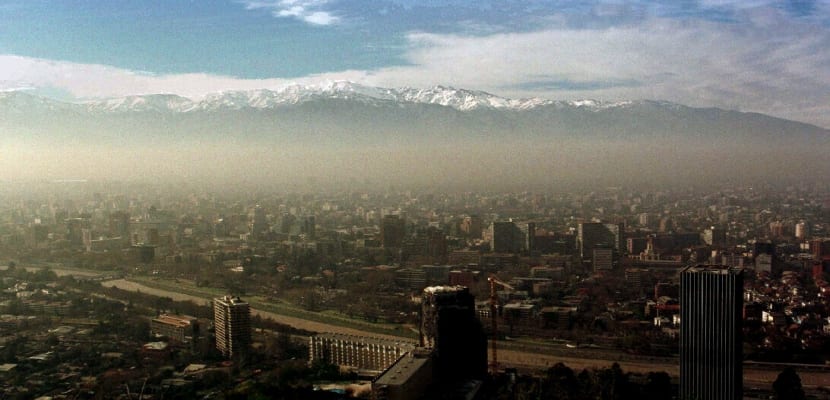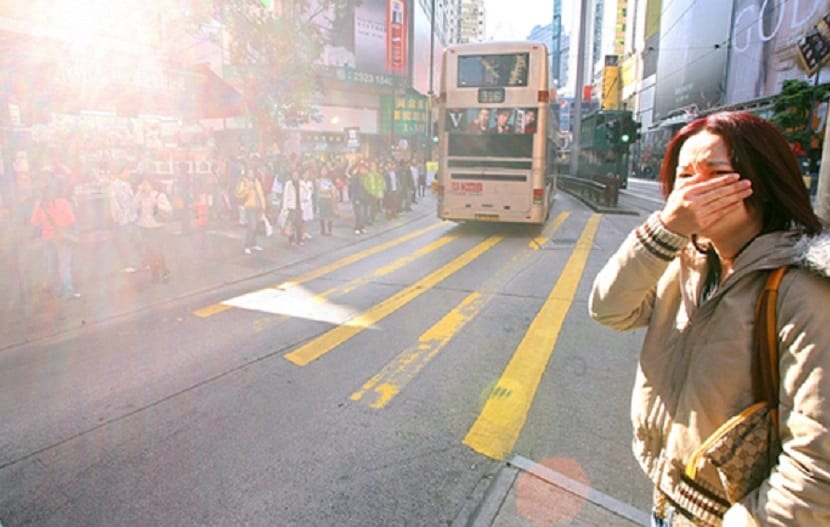
Many times we go outside, and to a greater or lesser extent, we can see a kind of smoke in the air where many of us mistakenly identify it as a light fog. It is the well-known smog or photochemical smog.
Smog is nothing but atmospheric pollution that negatively affects our health. Next, I am going to explain what smog really is, how it is produced, its consequences for both the environment and health, among other things that may be interesting.
What is smog?
Smog is the result of large sums of air pollution, especially from the smoke from burning coal, although it is also due to the gas emission produced by industries or factories and by cars.
That is, smog is a cloud produced by the environmental pollution and it receives this name because it resembles a dirty cloud, the words in English want to make a joke to give a nickname to said fog and they have put the words together smoke (smoke) and fog (foggy).
How is photochemical smog produced?
Now, to understand how this cloud or contamination occurs, I will try to explain it in a simple way.
The main pollutants that produce smog are nitrogen oxides (NOx), ozone (O3), nitric acid (HNO3), nitratoacetyl peroxide (PAN), hydrogen peroxide (H2O2), partially oxidized organic compounds and some light hydrocarbons not burned but released for automobiles as I mentioned above.
Another important factor is the sunlight since it generates free radicals that initiate the chemical processes for the formation of this cloud.
Due to NO2, it can sometimes appear orange in color although normal is a grayish color. One of the most characteristic examples is the skies of China or Japan.

The accumulation of the gases mentioned above are the causes of the formation of the smoke-like "cloud" and that, when combined with a period of high pressure, causes stagnant air forming a mist that, instead of being constituted by drops of water, is made up of polluted air, giving rise to a noxious, irritating and in some cases toxic atmosphere.
All this is what is known as photochemical smog which is typical of cities and which I am focusing on in this article, but also as informative data, only to comment that there is a more dangerous type of smog, and that is sulphurous smog.
This can take the form of both acid rain and fog.
Consequences on the environment
Obviously we have on the one hand an important impact on the landscape due to two causes:
- Your modification, since pollutants in the air directly or indirectly influence the development of the ecosystem.
On the other hand, because smog drastically decreases the visibility.
In cities with high smog, the distance from vision is reduced to a few tens of meters.
In addition, the vision in question of depth not only manifests horizontally, but also it does so vertically, making it impossible to see the sky.
Excess smog means that there are no clouds, no clear skies or starry nights, just a yellowish-gray or orange veil over us.
- Another impact that smog causes are changes in the weather of the place
The effects can be:
- Heat rise although the incidence of the Sun's rays is more complicated by the smog barrier.
The heat generated inside is not able to go outside due to the accumulation of gases causing a rise in temperatures.
- Precipitation is altered since pollutants and particles in carbon suspension cause a decrease in rain levels.
Here the phrase of the whiting that bites its tail fits very well since if we have the problem of smog there will be no rain, and without rain or wind, it is impossible to fight in a natural way it is smog.
Health consequences
I have already mentioned that smog creates a harmful, irritating and toxic barrier, now let's see what its effects are on our health.
- All the people who live in the “polluted” city are irritate the eyes and respiratory system, that is, the throat and the nose.
- However, children and the elderly are more vulnerable by sulfur dioxide, carbon monoxide and nitrogen dioxide, in addition to people with lung problems such as emphysema, asthma or bronchitis or even people with heart diseases.
- People who have allergies they can warn to worsen due to this contamination, especially when the atmosphere is much more loaded or in rainy days when all the pollutants are deposited.
- It can also cause shortness of breath, sore throat, cough, and decreased lung capacity In the big cities.
- Can also cause anemia Due to the high concentration of one of these gases, specifically carbon monoxide (CO), it blocks the exchange of oxygen in the blood and in the lungs.
- This does not end here since photochemical smog can also be cause of premature deathIn fact, there is a case in the British capital where in the middle of the XNUMXth century there were great deaths, achieving a record (if it can be called that way) of deaths from this pollutant.
From 1948 to 1962, around 5.500 people have died from smog in England.


Cities with the highest level of smog
Obviously the worst cities Regarding smog, they are the ones they do not have strong and constant winds, that is, those that are near the coast, in closed valleys ... and with little rain.
Some examples of these cities are:
- The aforementioned England, London has suffered a lot in the past from smog, that is why various ordinances and regulations have been they were improving the air, creating smoke-free zones, prohibiting certain industries as well as prohibiting vehicles from entering the downtown area, among other elements.
- Then we have Los AngelesSince it is a depression surrounded by mountains, so the smog that forms is very difficult to escape. Not to mention that it is one of the most polluting cities and still does not do much to reduce its level of pollution and the formation of smog.
- Santiago and MexicoThey also have the disadvantage that there are no strong winds and they are closed cities.
Being located in high altitude areas, the cold air keeps the photochemical smog “anchored”.
- Countries where coal is an important source of energy and are developing as China or some Eastern European countries, smog is still a big problem.
However, today, more advanced countries They have developed purification and control systems of the fuels that generate this toxic “fog” or smog, so its incidence is minimal.
Next, I leave you a video with images where it shows us the city of Beijing, China, in code red because of the smog.
Fighting photochemical smog
In this battle we have 3 sides, the Governments and large corporations, citizens and the own Nature.
First of all, smog can be perfectly fought by the mother natureThanks to the rain and the wind, it cleans and renews the air around us.
For this reason, it is much more common for smog to appear in areas where there is little or simply no wind and where it rains little, and of course, high pollution.
If nature with its "power" of air renewal can face the smog and win the battles, What role do the other 2 sides play?
Simple, in most cases in which the accumulation of these pollutants and the formation of smog occur, it is precisely because nature no longer has the necessary tools to be able to counteract such a high level of contamination.
And it is, in these cases, where the Governments and large corporations.
Such governments and corporations They are the cause that cities continue to fill with smog because they are what allow polluting emissions, most of which are produced by factories and industrial plants.
Are the citizens those of us who, by contributing our grain of sand, can help nature to combat smog.
As mentioned, one of the main causes of the appearance of smog are the fumes produced by cars, motorcycles, trucks and means of transport in general.
It is obvious that the grain of sand I am referring to is the methods for avoid continuing to contribute to smog formation and pollution.
I mean exactly promote the use of public transport, bet on electric vehicles, etc. For that very reason, there is a very good slogan that says: “Think global, act local!
As you can see, gestures as easy as taking a bus improve air quality, to this if we add the placement of more green spaces, be they parks, green roofs or even vertical gardens, cities can have a break and therefore we also.

It's the best information in the world
Thank you very much for your comment Mafio.
A greeting.